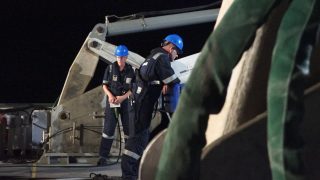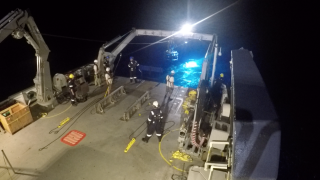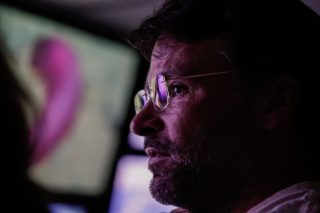Life at sea is about rhythm. Natural rhythms – such as tides and rolling swells – as well as the routines and tempo of work onboard a ship. We are winding down six weeks of sea trials in Guam with ROV SuBastian. This will be a change of pace for everyone leaving the ship; the daily testing schedule for SuBastian has been committed to memory. The sea trial objectives were to perform exercises that not only test ROV SuBastian’s capabilities, but also sharpen the team’s experience. “We’ve all heard ‘It takes a village to raise a child.’ Well, it takes a whole ship’s crew to dive SuBastian,” says Project Manager David Wotherspoon.
Getting the schedule down
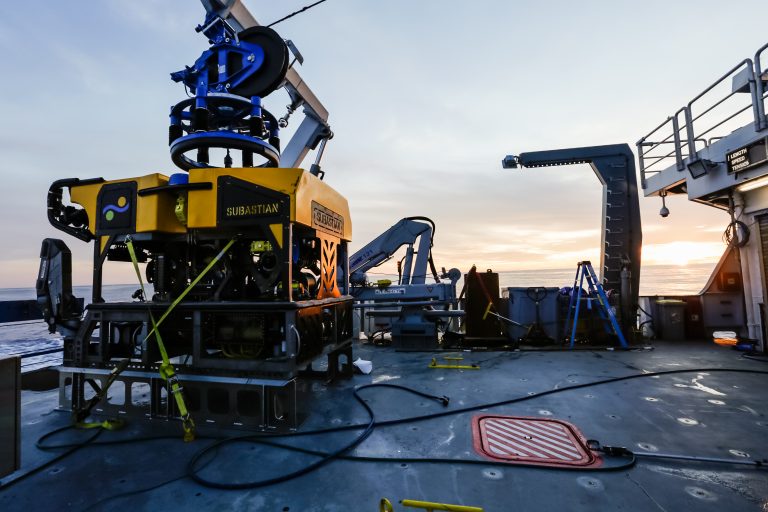
SuBastian has dove nearly every day for the past month, with the team following a similar routine. Wake up by 6am to prepare for a dive, breakfast at 7am, followed by meetings to work out last minute details – then SuBastian is ready to dive by 9am. These dives test the equipment (as well as our team of pilots, engineers and ship’s crew) in real-world conditions, demonstrating and confirming the functionality of ROV SuBastian as a world-class deep sea research platform.
Lunch is eaten mid-day while SuBastian explores the seafloor, performing exercises that ensure the robot meets the science community needs and expectations. These tests include maneuverability, navigational tasks, and sample collecting – including usage of the manipulator arms and biological boxes. The measurements to define “success” of these trails were put together from many interviews and conversations with the Science Advisory Group (SAG). The SAG is a team of scientists who have provided input throughout the design and construction of ROV SuBastian. They will be getting a chance to see SuBastian in real-time, when they travel to Guam in November for the Science Verification Cruise.
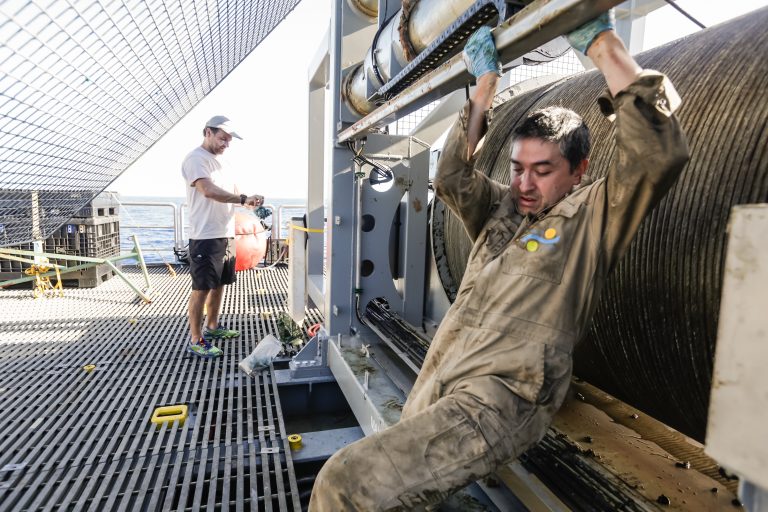
By late afternoon, ROV SuBastian is recovered and loaded on the aft deck. Dinner is served at 5:30pm, and the rest of the evening the crew goes over results of the day’s dive, and prepares for the next ocean encounter, including overall troubleshooting and debriefings.
In and Out of Port
Initially, the team was fortunate with weather when SuBastian began diving, but as August came around, conditions deteriorated. The flat, calm sea became rocking swells and white caps as winds whipped up around Falkor. The bad weather kept us in the harbor for a few days, but that provided us with unexpected time to solve a checklist of small issues discovered on previous dives. Most of the time has been spent at sea, but a few crew changes here and there provided some time in port.
Night Diving
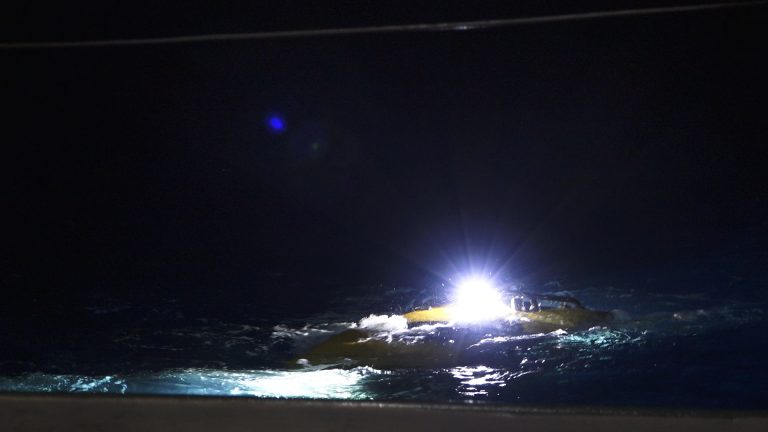
ROV SuBastian’s first night dive drew a lot of anticipation. Four deckhands stood ready with tag lines to help guide the vehicle into the water. Everyone waited patiently as the A-frame crane slowly transferred it into the water. With rough weather and dark skies, the crew has to be extra cautious with deployment and recoveries. Everyone was a little more focused than usual, and the attention to detail paid off. The crew stood on deck, watching the glittering blue light grow smaller and smaller as SuBastian descended into the deep. It is not a quick process for SuBastian to descend or ascend the water column: the speed is about 30 to 40 meters per minute.
As SuBastian dove the seafloor, the ROV pilots monitored the screens in the control room making sure the instrument readings and positioning looked correct. On this particular night dive, ROV SuBastian went down to 2530 meters successfully. Upon SuBastian’s recovery, the team waits eagerly for the first hint of the ROV- a little blue glow rising from the deep and the dark. It is a good feeling to watch the blue light get bigger and bigger. The team carefully brings SuBastian out of the water and then lowers the ROV on deck, securing it on the custom-made foundation. As the weeks went on, the recovery process became smoother, confidence gained dive by dive.
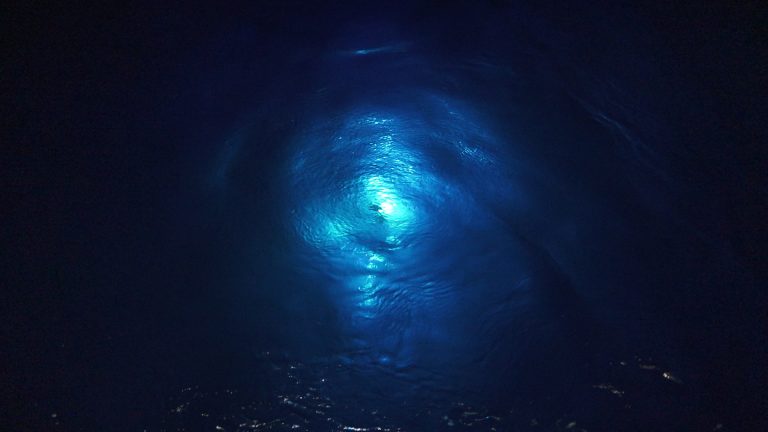
Reflections
After witnessing more than 12 of these dives in all types of conditions, I am still thrilled by the adventure. Every dive is different and brings us closer to handing off SuBastian to the crew for science cruises. With the sea trials now ending, the engineering team can pat each other on the back for a job well done. Another milestone achieved for SuBastian. I look forward to seeing what this ROV can do during its first science cruise later this year.
